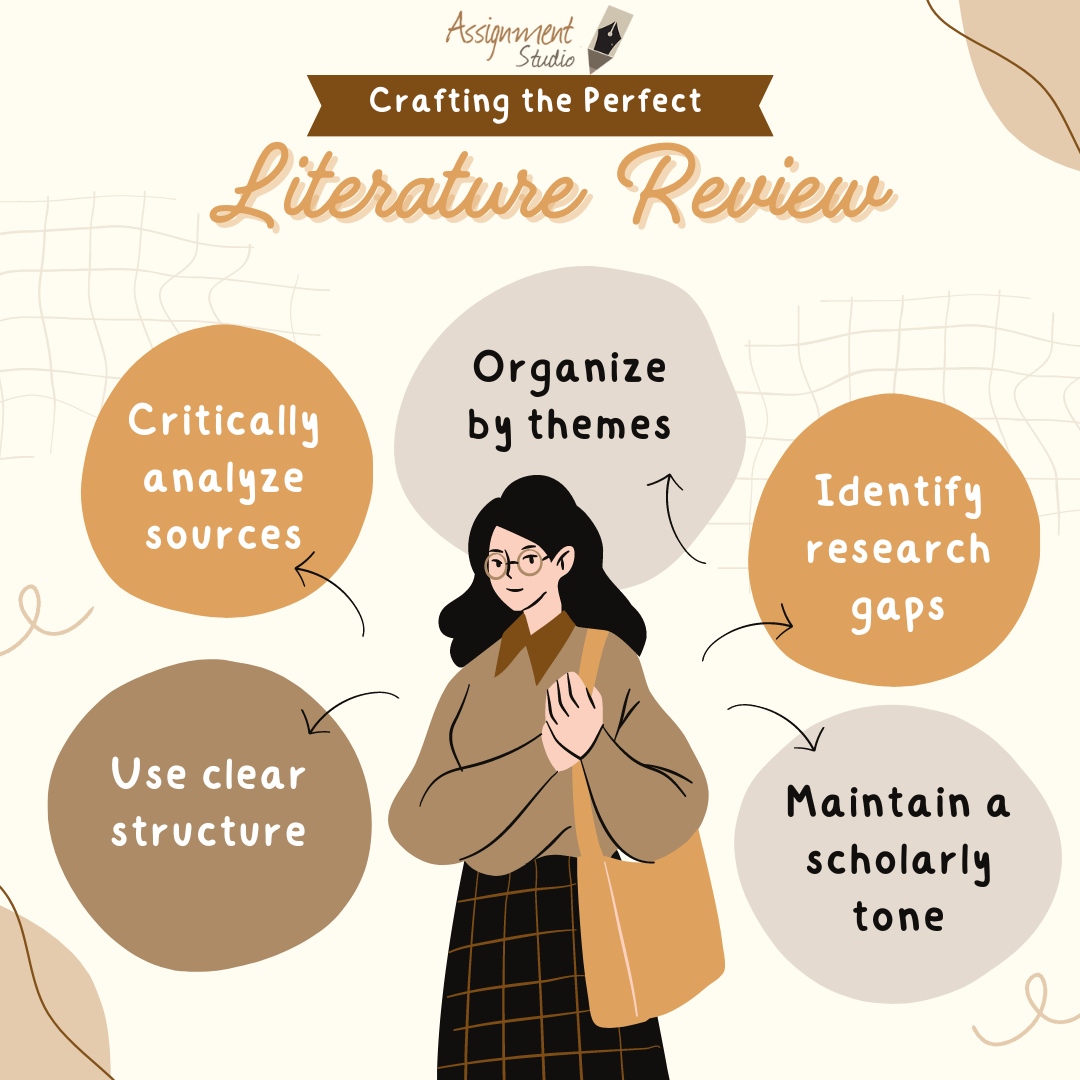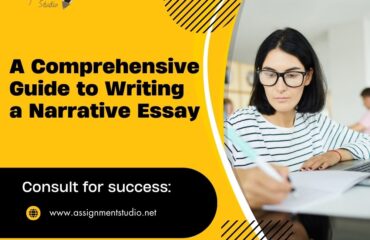
Are you an Australian university student grappling with the challenge of writing a literature review? You’re not alone. Many students find this crucial component of academic writing to be daunting. But fear not! This comprehensive guide will walk you through the process of crafting the perfect literature review, ensuring you meet the high standards of Australian academia.
Table of Contents
Understanding the Literature Review: More Than Just a Summary
Before we dive into the how-to, let’s clarify what a literature review is and why it’s so important in academic writing.
A literature review is a critical analysis of published sources, or literature, on a particular topic. It’s not just a simple summary of sources; rather, it’s an evaluation of the current state of research on your chosen topic. In Australian universities, a well-crafted literature review demonstrates your understanding of the field and forms the foundation for your own research.
Key Purposes of a Literature Review:
- Provide an overview of existing research
- Identify gaps in current knowledge
- Justify your research question
- Demonstrate your understanding of the subject area
Now that we understand its importance let’s explore how to craft the perfect literature review.
Step 1: Choosing Your Topic and Defining Your Scope
The first step in writing a stellar literature review is selecting a topic and defining its scope. This is crucial for Australian students, as your topic should be relevant to your field of study and aligned with current research trends in Australia.
Tips for Choosing Your Topic:
- Consider current issues in your field within the Australian context
- Look for areas with conflicting research or gaps in knowledge
- Consult with your supervisor for guidance
- Ensure the topic is manageable within your word limit and timeframe
Remember, a well-defined topic is half the battle won in assignment writing.
Step 2: Conducting a Comprehensive Literature Search
Once you’ve nailed down your topic, it’s time to dive into the research. Australian universities have high expectations for the depth and breadth of sources used in literature reviews.
Effective Research Strategies:
- Utilize your university’s library databases (e.g., JSTOR, Google Scholar)
- Use Boolean operators to refine your search (AND, OR, NOT)
- Look for peer-reviewed journals and reputable academic sources
- Don’t forget to include Australian research and publications
- Keep track of your sources using reference management software like EndNote or Mendeley
Pro Tip: Many Australian universities offer workshops on effective research techniques. Take advantage of these resources!
Step 3: Analyzing and Evaluating Your Sources
Critical analysis is the heart of a good literature review. Australian markers look for evidence of critical thinking and evaluation in your work.
Questions to Ask When Evaluating Sources:
- What are the main arguments or findings?
- How does this source relate to others in the field?
- Are there any limitations or biases in the research?
- How relevant is this source to your specific topic?
- Is the methodology sound and appropriate?
Remember, it’s not just about what the sources say, but how they contribute to the overall understanding of your topic.
Step 4: Organizing Your Literature Review
Organization is key in academic writing. A well-structured literature review will make your argument clear and compelling.
Common Organizational Strategies:
- Chronological: Trace the development of the topic over time
- Thematic: Group sources by themes or theoretical concepts
- Methodological: Focus on the methods used in various studies
- Theoretical: Examine how theory has been applied to your topic
Choose the structure that best suits your topic and the flow of your argument.
Step 5: Writing Your Literature Review
Now comes the real challenge – putting pen to paper (or fingers to keyboard). Here’s how to ensure your literature review meets the high standards of Australian academic writing.
Introduction:
- Clearly state your topic and research question
- Provide an overview of the structure of your review
- Highlight the significance of your topic in the Australian context
Body:
- Group your sources based on your chosen organizational strategy
- Synthesize information rather than summarizing each source individually
- Use transition sentences to show relationships between ideas
- Highlight agreements and disagreements in the literature
- Identify gaps or areas for further research
Conclusion:
- Summarize the main findings from your review
- Relate the findings back to your research question
- Discuss implications for future research or practice in Australia
Step 6: Perfecting Your Academic Writing Style
Australian universities place a high value on clear, concise, and formal academic writing. Here are some tips to enhance your writing style:
- Use formal language and avoid colloquialisms
- Write in the third person (avoid “I” and “you”)
- Use discipline-specific terminology appropriately
- Ensure your writing is objective and balanced
- Use active voice where possible for clarity
Step 7: Proper Referencing: A Must in Australian Academia
Proper referencing is non-negotiable in Australian academic writing. Familiarize yourself with the referencing style required by your university (e.g., APA, Harvard, MLA).
Key Referencing Tips:
- Cite all sources used, both in-text and in your reference list
- Be consistent with your referencing style
- Use referencing software to manage your citations
- Double-check all references for accuracy
Remember, plagiarism is taken very seriously in Australian universities. Always give credit where it’s due!
Step 8: Editing and Proofreading: The Final Polish
Don’t underestimate the power of thorough editing and proofreading. This final step can make the difference between a good and a great literature review.
Editing Checklist:
- Check for clarity and coherence of arguments
- Ensure your review flows logically
- Verify that all sources are relevant and well-integrated
- Check for proper sentence structure and grammar
- Ensure consistent formatting throughout
Pro Tip: Read your review aloud or use text-to-speech software to catch awkward phrasing or errors.
Common Pitfalls to Avoid in Literature Review Writing
Even the best students can fall into these traps. Stay vigilant to avoid these common mistakes:
- Lack of critical analysis: Don’t just summarize sources; analyze and evaluate them
- Poor organization: Ensure your review has a clear structure and flow
- Outdated sources: Use current research, especially in rapidly evolving fields
- Bias: Present all viewpoints objectively, even if you disagree
- Insufficient Australian context: Include research relevant to the Australian academic landscape
Leveraging Academic Support Services in Australian Universities
Don’t forget that Australian universities offer a wealth of support services to help you excel in your academic writing:
- Writing centers: Get feedback on your drafts
- Library workshops: Learn advanced research techniques
- Academic skills units: Improve your critical thinking and writing skills
- Peer mentoring programs: Learn from experienced students
Take advantage of these resources – they’re there to help you succeed!
Crafting Your Path to Academic Excellence
Crafting the perfect literature review is a challenging but rewarding process. By following this guide and utilizing the resources available at your Australian university, you’re well on your way to producing a top-notch literature review.
Remember, a great literature review not only demonstrates your understanding of the current research but also paves the way for your own contribution to the field. It’s an opportunity to showcase your critical thinking skills and your ability to synthesize complex information – skills that are highly valued in Australian academia and beyond.
So, embrace the challenge, stay organized, think critically, and don’t be afraid to seek help when you need it. With perseverance and the right approach, you’ll be crafting perfect literature reviews in no time.
Happy writing, and best of luck in your academic journey in Australia!






